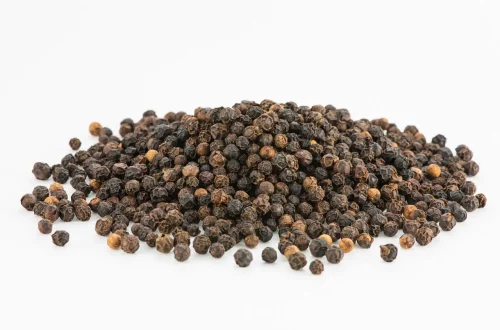
Essential Guide to Flea Shots for Dogs: Protect Your Pet Today
Fleas are more than just a nuisance; they pose significant health risks to our beloved canine companions. These tiny, blood-sucking parasites can cause discomfort and lead to serious medical issues if left unchecked. Fleas thrive in various environments, making it crucial for dog owners to understand how to protect their pets effectively. The impact of a flea infestation can extend beyond your dog to your household and even affect other pets.
As pet owners, we want to ensure our furry friends lead happy, healthy lives, free from the torment of fleas. With the right preventive measures, including flea shots and other treatments, we can significantly reduce the risk of these pests. Understanding the nature of fleas, their life cycle, and the various preventive options available empowers us to make informed decisions for our pets.
In this guide, we will delve into the essentials of flea prevention for dogs, exploring various methods and the importance of veterinary consultation. By taking proactive steps, you can help safeguard your pup against these unwelcome invaders, ensuring they remain comfortable and healthy.
Understanding Fleas and Their Life Cycle
Fleas are small, wingless insects that primarily feed on the blood of mammals, including dogs and humans. Their bodies are flat, allowing them to navigate through your pet’s fur easily. Understanding the flea life cycle is vital for effective prevention and control. The flea life cycle consists of four stages: egg, larva, pupa, and adult.
The cycle begins when adult fleas lay eggs on a host animal. These eggs are small, white, and not sticky, meaning they can easily fall off into the environment, such as carpets, bedding, and yards. Once the eggs hatch, they transform into larvae, which are small, worm-like creatures that feed on organic debris, including flea feces. This larval stage typically lasts for several days to a few weeks.
Next, the larvae pupate, creating a cocoon that can withstand various environmental conditions. Flea pupae can remain dormant for several months, waiting for the right conditions to emerge as adult fleas. This resilience makes them particularly challenging to eliminate. When conditions are favorable—like the presence of a host animal—the adult fleas emerge from their cocoons, ready to find a new host.
Adult fleas can live for several weeks to months on a dog, feeding multiple times a day. A single female flea can lay hundreds of eggs during her lifetime, leading to rapid infestations if not addressed promptly. This understanding of the flea life cycle is crucial for pet owners, as it highlights the need for consistent preventive measures to break the cycle and protect their pets.
Flea Shots: What You Need to Know
Flea shots, technically referred to as flea vaccines, are a preventive measure aimed at reducing the risk of flea infestations in dogs. However, it’s important to clarify that conventional flea vaccines are not as common as other vaccinations and might not be available in all regions. Instead, what many pet owners often refer to are veterinary-prescribed treatments that can help combat fleas, including topical treatments, oral medications, and insect growth regulators.
While flea shots may not be the primary method of prevention, they can play a role in a comprehensive flea control strategy. These treatments work by affecting the flea’s nervous system or disrupting their life cycle, thus preventing them from maturing into adult fleas. Some of these products provide long-lasting protection, making them a convenient choice for pet owners.
Moreover, the effectiveness of flea treatments can vary based on several factors, including the dog’s age, health status, and the severity of the flea infestation. Therefore, consulting with a veterinarian is essential to determine the most appropriate flea prevention strategy for your dog. The veterinarian can recommend the best products based on your pet’s specific needs and lifestyle.
It’s also important to note that while flea shots and treatments can greatly reduce the likelihood of infestations, they should be used in conjunction with other preventive measures. Regular grooming, maintaining a clean living environment, and treating other pets in the household are all critical aspects of an effective flea prevention strategy.
Topical and Oral Flea Treatments
In addition to flea shots, there are various topical and oral flea treatments available that provide effective protection against infestations. Topical treatments, often referred to as spot-on treatments, are applied directly to your dog’s skin. These products typically contain insecticides that kill fleas upon contact and prevent new ones from latching onto your pet.
One of the main advantages of topical treatments is their ease of application and rapid action. Most topical products start working within hours, providing immediate relief from fleas. They are usually applied monthly, ensuring ongoing protection throughout the flea season. However, it is crucial to follow the manufacturer’s instructions carefully, as incorrect application can reduce effectiveness or lead to adverse reactions.
Oral flea medications are another popular option. These come in the form of tablets or chewable treats, making them easy to administer. Oral treatments often work by targeting fleas in different ways, either killing them upon ingestion or preventing them from reproducing. Some oral medications offer long-lasting protection, with effects lasting for up to three months, making them a convenient choice for busy pet owners.
Both topical and oral treatments have their pros and cons. For example, while topical treatments may be effective against existing fleas, they may not be as effective in preventing flea eggs from hatching. Conversely, oral medications may require a prescription and can sometimes cause gastrointestinal upset in sensitive dogs.
Ultimately, the choice between topical and oral flea treatments depends on various factors, including your dog’s health, lifestyle, and any potential allergies. A thorough discussion with your veterinarian can help you decide which option works best for your furry friend.
Maintaining a Flea-Free Environment
Preventing fleas is not solely about treating your dog; it also involves maintaining a flea-free environment. Fleas can thrive in your home, so taking steps to eliminate their presence is crucial. Regular cleaning and vacuuming are essential practices to reduce flea populations in your living space.
Start by vacuuming carpets, rugs, and upholstery frequently, as these are common hiding spots for fleas and their eggs. Be sure to dispose of the vacuum bag or empty the canister immediately to prevent any fleas from escaping back into your home. Washing your dog’s bedding and any blankets they frequently use in hot water can also help eliminate flea eggs and larvae.
In addition to regular cleaning, consider treating your home with safe flea control products. There are various sprays and foggers available that target fleas in various life stages. Make sure to choose products that are safe for pets and humans, as some insecticides can be harmful if inhaled or ingested.
If you have a yard, maintaining it properly can also prevent flea infestations. Regularly mowing the lawn, trimming bushes, and removing debris can help reduce flea habitats. Additionally, consider using natural flea deterrents in your yard, such as nematodes, which are beneficial microscopic worms that feed on flea larvae.
By combining effective treatment options for your dog with diligent cleaning and maintenance of your home and yard, you can create an environment that is inhospitable to fleas. This comprehensive approach is the best way to ensure your pet remains safe and healthy.
It is important to remember that this article is not a substitute for professional medical advice. If you suspect your dog has a flea infestation or any health issues, please consult your veterinarian for guidance tailored to your pet’s specific needs.




